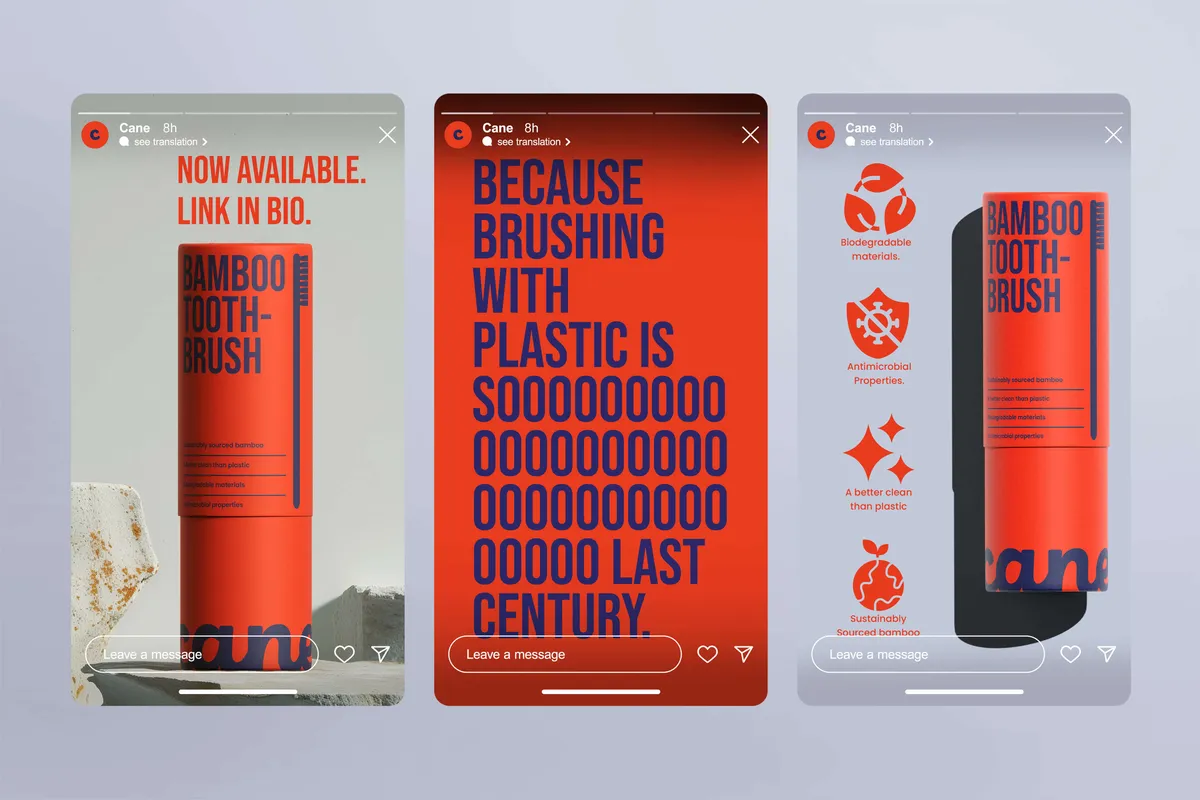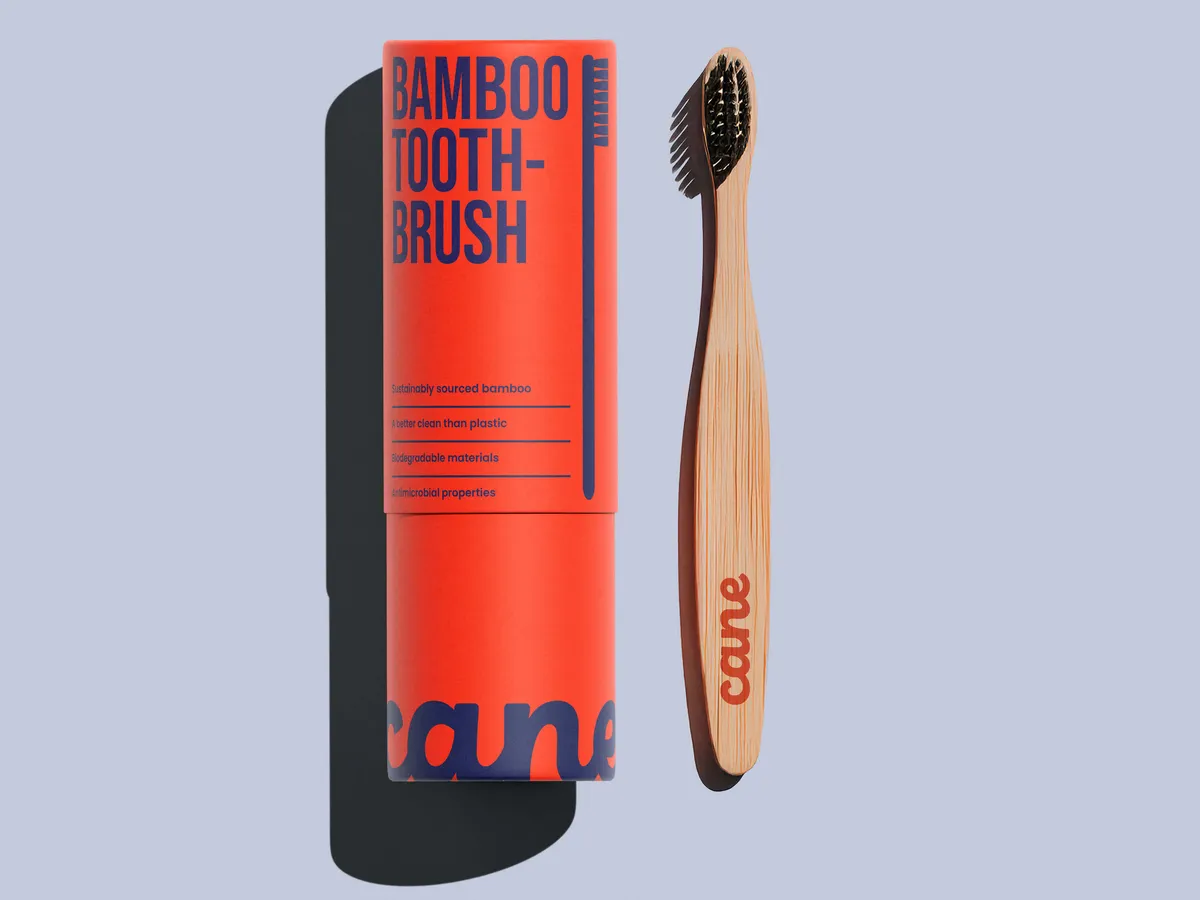
You can just blink and brand design trends have already changed. In a world where your customers are scrolling at the speed of light and judging your entire brand in a three-second encounter, If your visuals don’t earn attention straight away, you’ve already lost them.
2025 is shaping up to be the year where brands really stop playing safe. The future belongs to brands that know who they are and aren’t afraid to show it – whether that’s by stripping everything back to bare bones or going ridiculously over the top. Let’s take a look at what’s next.
Minimalism isn’t dead, but it’s definitely being side-eyed. For years, every brand seemed desperate to shave off details and sand down edges until all that was left was a plain wordmark in black Helvetica. Yes it’s functional. But memorable? Maybe not … anymore.
Now we’re seeing a swing back in brand design. Enter maximalism where you’ll see clashing colour palettes, large typography, loud patterns, and design that begs for someone to “look at me”. Gen Z audiences are loving it, because subtlety doesn’t cut through a feed crammed with content.
But don’t write minimalism off just yet. Done well, it still carries a sense of confidence – “we don’t need bells and whistles, you already know us.” Luxury brands lean on this heavily, and it works because restraint can feel powerful when everyone else is yelling.
The real future? Brands choosing a side based on personality rather than trend-hopping. If you’re cheeky, bold, and disruptive – maximalism is your playground. If you’re timeless and refined – minimalism is the one. Point is, your brand doesn’t need to pretend to be someone they’re not. The key is conviction, not chasing whatever the design blog says is hot this week.


We’ve officially hit green-washing fatigue. Slapping a little leaf icon on your packaging doesn’t convince anyone anymore. It’s pretty much a standard expectation for design to be eco-friendly these days. In 2025, sustainability has to be baked into your brand design from the start – not sprinkled, baked 🍃.
Look at brands like Who Gives A Crap. Their eco-friendly loo roll is wrapped in playful patterns and bright colours, but the real statement is in the materials – recycled paper, zero plastic, carbon-neutral shipping. The design doesn’t just say it’s sustainable – it feels sustainable.
Younger shoppers aren’t just passively noticing, they’re actively choosing. 62% of Gen Z consumers now lean toward sustainable brands, and nearly three-quarters are happy to pay extra for products that match their values. That’s not a niche – that’s the future customer base.
Consumers are looking for honesty. They want packaging that looks just as considered as the product inside – raw textures, uncoated paper stocks, design choices that scream “we didn’t kill the planet for this.” Brands that ignore this shift won’t just look out of touch – they’ll look untrustworthy. And the thing is, a lot of people hold the view that sustainability is a limitation when it comes to brand design. It’s really not – you just have to get creative with it. Or find some great brand designers that can take the lead 😉.
Sustainability is no longer a nice extra. It’s a design choice that signals integrity. If your visuals don’t line up with your eco-claims, people will spot the disconnect instantly – and they won’t forgive you.


AI isn’t coming for designers’ jobs (just yet …) – but it is shaking up how brands are built. What used to take weeks of exploration now takes hours. Let’s say you need 50 mock-ups of your packaging in different contexts. AI can do that before lunch. Want to test how your logo lands with different demographics? AI tools are already feeding back insights.
While all this is lovely stuff – AI can only remix what already exists. It’s a helpful tool for speed, but it’s not going to hand you originality on a silver platter. That still comes from humans who actually get culture, nuance, and humour. Otherwise, you just end up with a brand that looks like everyone else’s.
And because digital is now the first place most people meet your brand – whether that’s TikTok, Instagram, or your website – brand design has to be responsive, animated, and versatile. A static logo on a pack isn’t enough. Brands in 2025 need motion assets, sound cues, and digital-ready colour systems that translate both on a phone screen and on a billboard. That’s life now – so it’s something we need to get used to.
AI plus digital-first thinking doesn’t kill creativity. It just raises the bar. The future belongs to brands that yes, use tech here and there to move a little faster but don’t rely on it to build their entire brand. That’s where humans – proper brand designers – come in. You need the messy, radical, gut-driven ideas that only people can bring.

Don’t just sit there and chase new trends – they have to make sense to you and your brand. Brand design is all about knowing what your brand stands for and expressing it with confidence. Minimalist or maximalist, eco-warrior or digital disruptor – the brands that smash it will be the ones that stop blending in and start owning their space.
At Noramble, we’re obsessed with helping brands do exactly that. We dig out what makes you radically different, then turn it into brand design that connects with the right people. Because the future of brand design isn’t just about keeping up – it’s about leading the charge.
Need a hand with your brand design? Count us in.